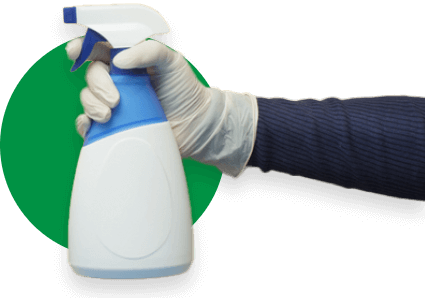Hardwood floors look fantastic in just about any home. They can look even better within a commercial property. However, the problem in both instances is trying to keep them clean. Particularly in a commercial space, these floors will see a ton of foot traffic. This is much different foot traffic than what would go on around the home. Instead of cotton socks or bare feet walking across, business people are wearing shoes. Those shoes have likely been outside before stepping onto the floor, meaning some of the dirt and grime that they track will transfer onto the floor. As pretty as hardwood floors look when they are clean, it’s very apparent when an area of the floor is dirty or damaged. Fortunately, there are things any commercial property owner can do to keep their floors clean.
What is Hardwood Floor Cleaning?
Cleaning hardwood floors involves more than just sweeping and mopping. Regular maintenance includes vacuuming, dusting, and deep cleaning to remove embedded dirt and grime. Experts recommend cleaning hardwood floors at least weekly to maintain their shine and at least monthly for a thorough clean that includes appropriate wood cleaners.
Clean floors not only enhance the aesthetic appeal of your space but also contribute to a healthier indoor environment by reducing allergens. Moreover, well-maintained hardwood floors are less likely to suffer from damage, thus extending their lifespan and increasing the resale value of your property.
Investing in professional hardwood floor cleaning services is also a smart choice. Professionals use specialized tools and products designed for hardwood. This regular maintenance prevents the costly repairs and replacements that come with neglect.
Nine Hardwood Floor Cleaning Tips from Experts
Learn the best techniques and products to maintain your hardwood floor’s natural beauty and longevity.
Basic Mop and Bucket Cleaning
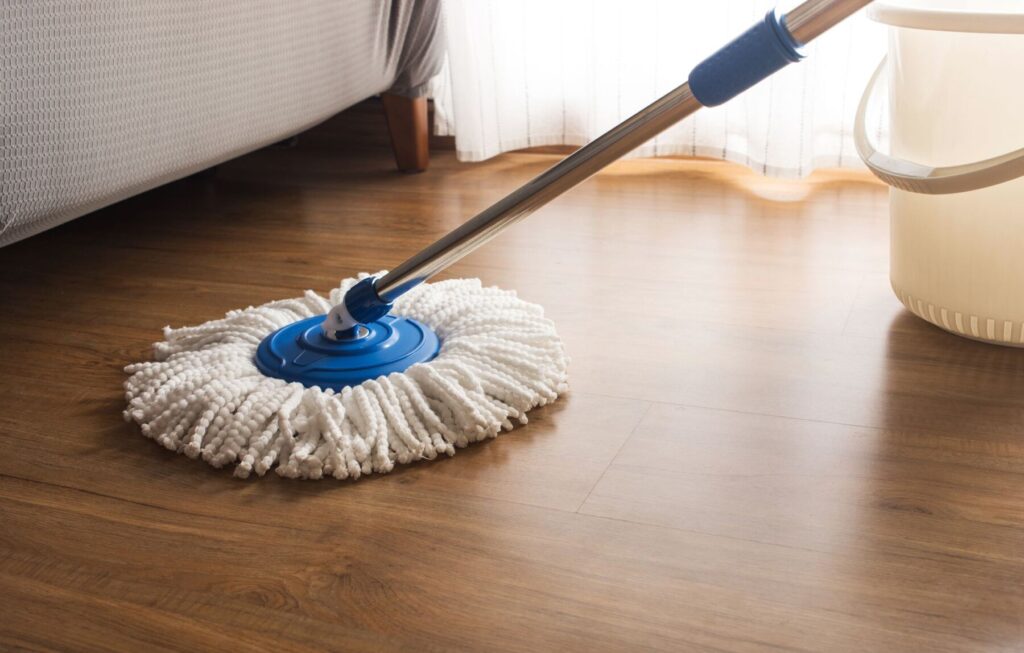
If you have ever worked in fast food, you know just how effective the simple mop and bucket can be. “Mop water” usually consists of just a basic cleaning solution and some water. The process here will be a different one. However, before even getting that far, be sure to dust mop the floor first. This will help clear any loose debris or dirt that may be lurking on the surface.
If that crud is still there when you go to mop, you’ll end up just pushing dirt around instead of actually cleaning it. Once everything is dusted, however, the mopping process can begin. The key to mopping is finding the perfect level of dampness for the mop before running it across the surface.
A good rule of thumb to follow is that you should be able to see some sort of water trail following the mop, but the mop should not be so wet that it starts leaving droplets behind. Mopping should happen twice; once with a mixture of water and cleaning solution and once with just water.
Be sure to choose a neutral solution, as an improper solution can damage the topcoat of the floor. The cleaning solution will take effect, but if left sitting on the surface too long, it can damage the floor. Be sure to mop a second time with just water to clear off the solution. This may be a bit of a tedious process for larger floor space, but it’s one that is worth the time.
Dry Floors with a Floor Fan or Air Mover
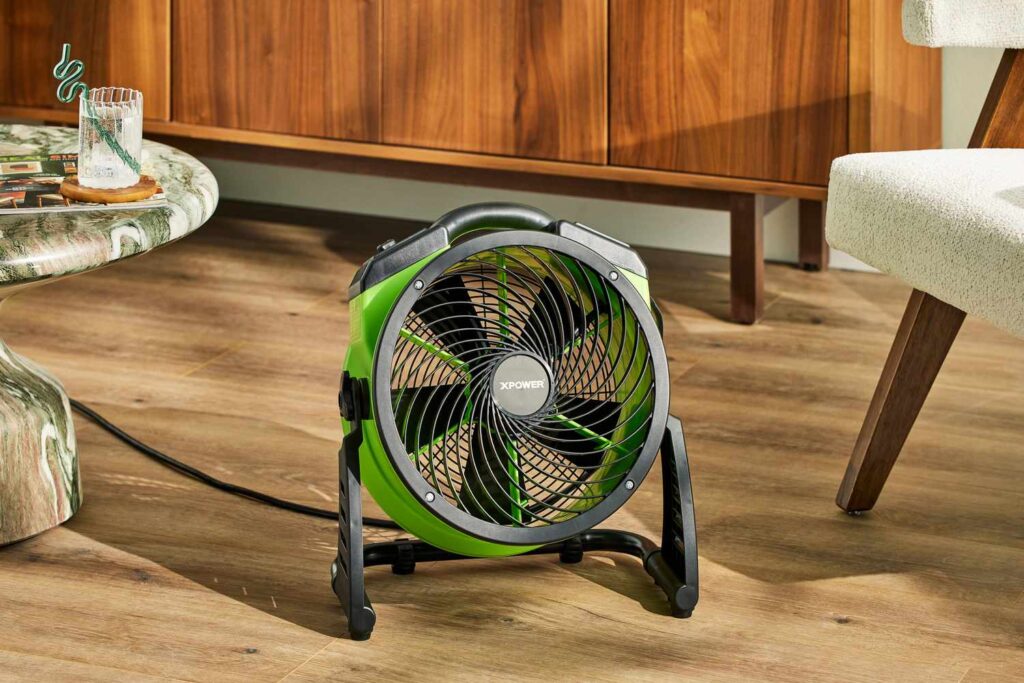
It may not seem like a big deal, but the method you use to dry a hardwood floor after cleaning it is an important factor. When most people think of a wet floor, they think of getting a towel (or maybe just some paper towels in a small area) and just wiping the surface down. While this will technically do the job of drying the floor, it can create damage.
The microfibers in a towel can scratch the floor and leave behind marks and damage. Instead, it is recommended to use either a floor fan or an air mover. This way, nothing comes into direct contact with the floor as it dries, and nothing damages it.
Be sure to dry the surface fairly quickly after cleaning. If too much moisture is left on the surface for too long, it can damage the floor and even cause it to warp.
Finish Hardwood Floors by Reapplying the Topcoat
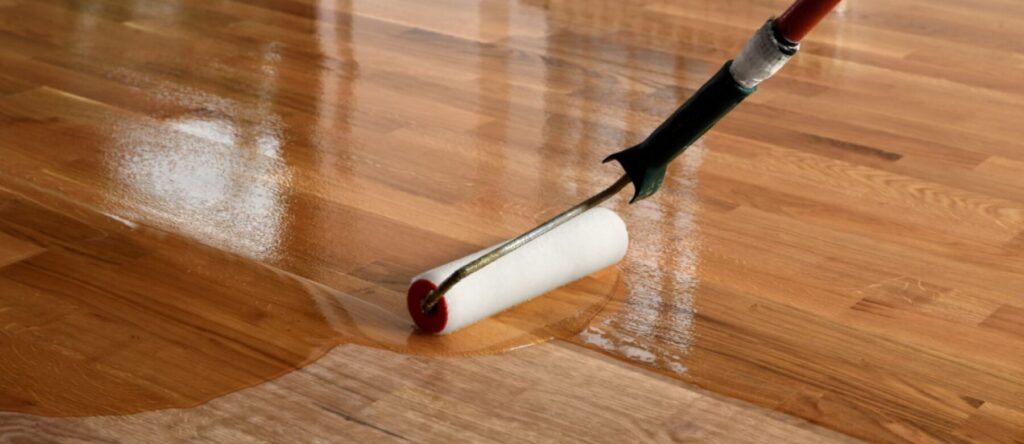
As mentioned, the right cleaning solution will not damage a floor’s topcoat. That topcoat is very important to hardwood floors as it is their main source of protection. In most cases, floors will use polyurethane. This creates a thin, clear layer on top of the floor that hardens as it dries and protects the surface underneath.
It also adds a sheen, whether it be a semi-gloss or gloss finish, that can help the floor stand out and look good. After a surface has been cleaned and dried, consider reapplying another layer of polyurethane. This will give the floor the appearance of being new. Plus, your tenants will thank you for keeping their workspace looking sharp and clean.
The one thing to be sure of with finishing a floor is making sure all of the loose dirt on the surface is gone before applying the topcoat. That dirt will stick out like a sore thumb on top of being stuck under the polyurethane. Just be thorough in the dusting process and you should be all set.
Search for the Right Hardwood Cleaning Tools
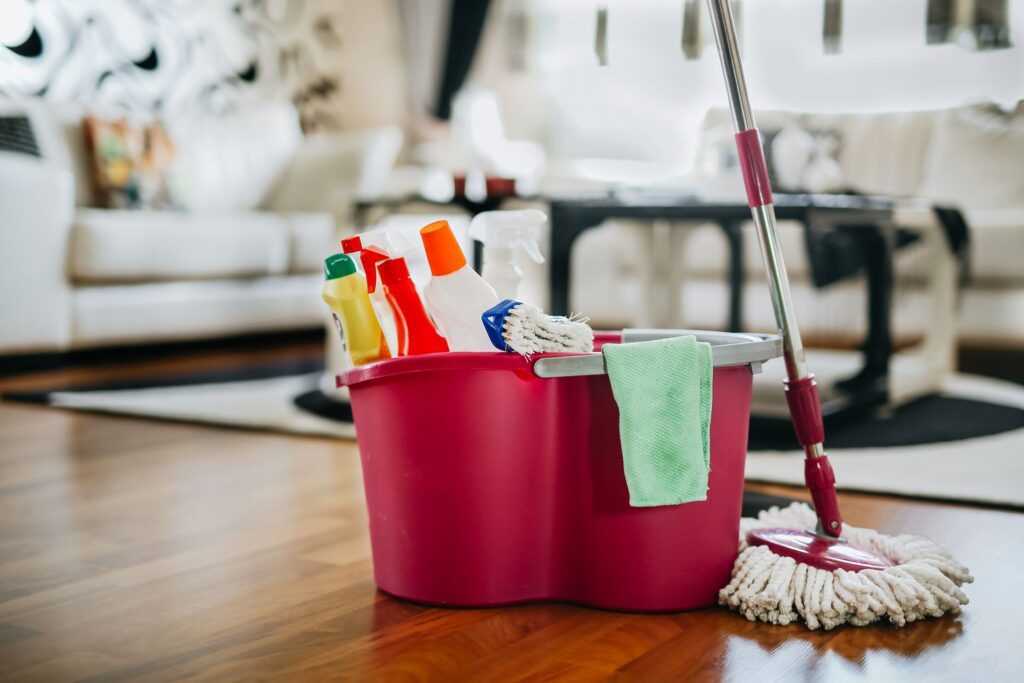
One of the more important things to remember when cleaning a hardwood floor is to not go cheap on it. Make sure you are buying the proper cleaning products and using the right equipment to treat the floor.
This includes both the cleaning substances you use on the floor as well as the drying and finishing materials. Hardwood floors are not cheap, so don’t treat one as such and let a beautiful floor go to waste.
Trying to skate by doing the minimum will only result in long-term damage to the floor that, in some cases, won’t be able to be undone. Plus, having a dirty and damaged hardwood floor tends to look worse than not having a hardwood floor at all.
Protect Hardwood with Rugs and Pads
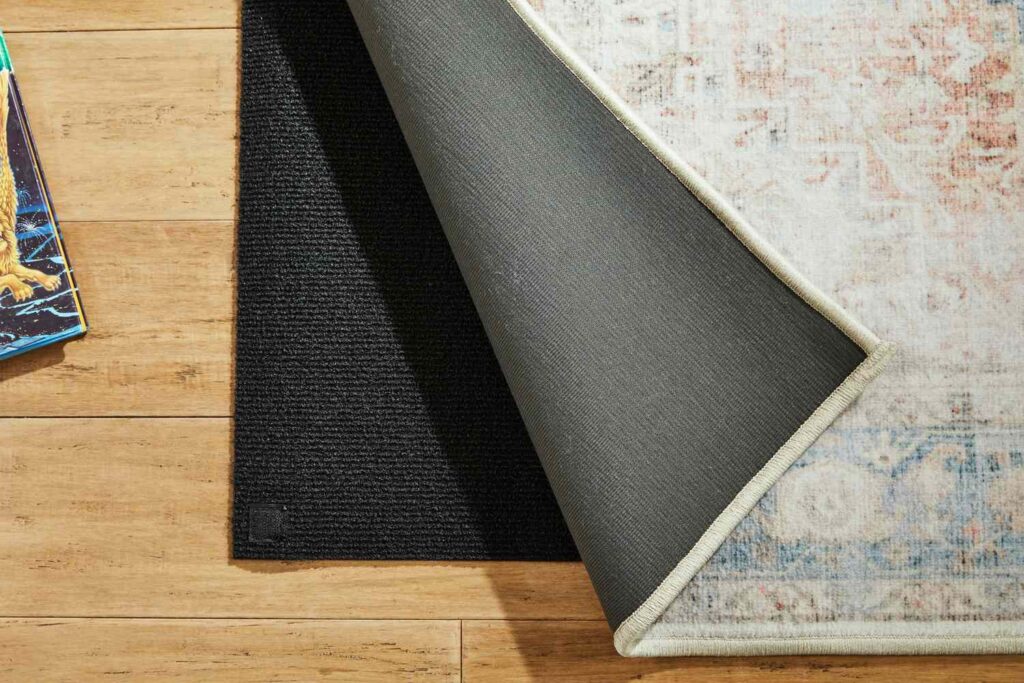
One of the simplest yet most effective ways to protect your hardwood floors is by using rugs and pads. These accessories not only add a touch of style to your space but also catch dirt and debris that can scratch or dull the wood surface.
Place rugs in high-traffic areas such as entrances, hallways, and in front of kitchen sinks to minimize wear and tear. Choosing the right pad underneath is equally important, as it prevents the rug from slipping and provides additional cushioning, further protecting your floors.
Fix Scratches and Apply Hardwood Floor Wax

Scratches can detract from the natural beauty of your hardwood floors, but they don’t have to become a permanent eyesore. For minor scratches, a simple DIY solution involves rubbing a matching crayon over the scratch, and then buffing it gently with a soft cloth.
Additionally, applying a high-quality hardwood floor wax can revitalize the look of your floors and add an extra layer of protection. Waxing helps fill in small blemishes and gives your floors a beautiful, glossy finish that can resist further scratching and damage. A professional touch-up is also advised.
Stick to a Regular Schedule of Floor Maintenance
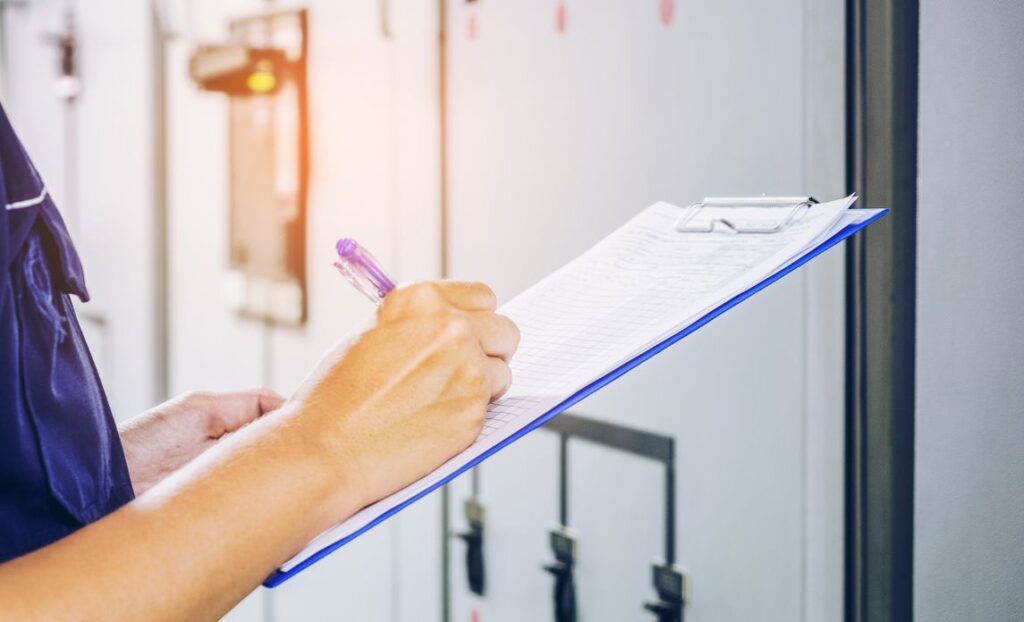
Regular maintenance not only keeps your floors looking great but also extends their lifespan by preventing the buildup of dirt and grime that can lead to more serious damage. Dust and clean your floors weekly to remove abrasive particles, and consider a deeper clean or professional service every three to six months, depending on traffic and wear.
If you are too busy to do the cleaning, consider Dallas Janitorial Services, renowned for its expertise in hardwood floor cleaning. Whether you need routine cleaning or a full-scale restoration, they have the skills to bring out the best in your hardwood floors.
Consider Deep Cleaning Hardwood Floors

Deep cleaning your hardwood floors periodically can make a huge difference, especially in maintaining their look and removing deep-seated dirt and odors. For an effective deep clean, use an oxygenated cleaner specifically formulated for hardwood.
This type of cleaner helps break down dirt and grime without harming the wood’s finish. When applying the cleaner, opt for a microfiber pad designed for deep cleaning.
Microfiber pads are gentle on the wood yet tough on dirt, ensuring you get a thorough clean without scratching the surface. They also help prevent the growth of odor-causing bacteria, keeping your floors fresh and clean.
Remove Stains with Natural Hardwood Floor Cleaner
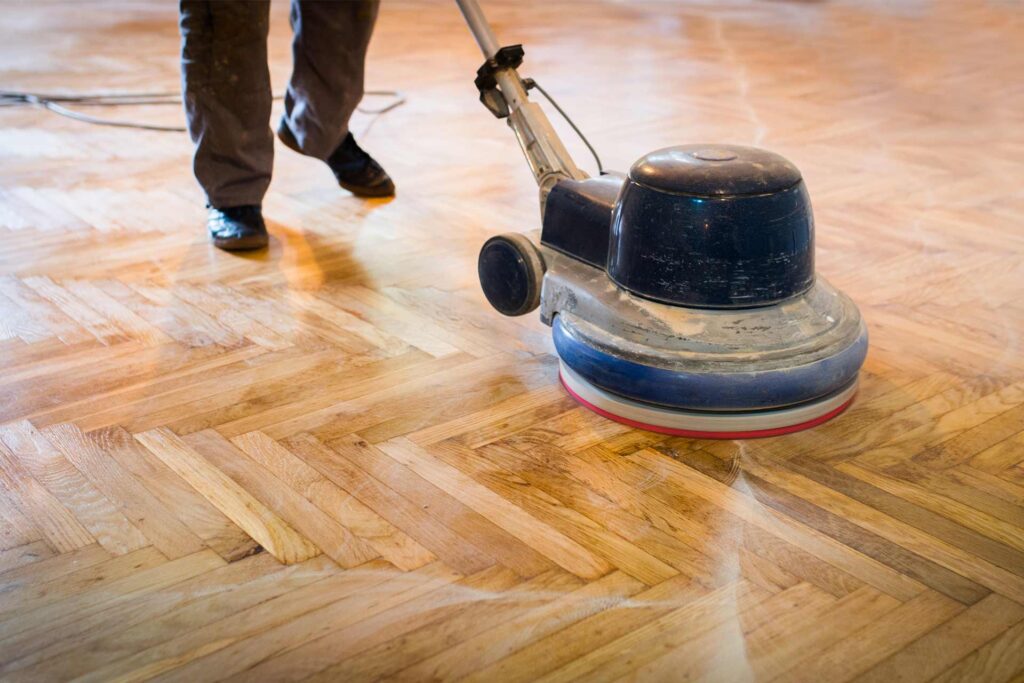
Stains on hardwood floors need special attention as the wrong cleaning method can do more harm than good. Avoid harsh chemicals such as ammonia and chlorine bleach. Acidic natural cleaners like white vinegar, and lemon juice, and abrasive substances like baking soda can also damage hardwood floors.
Choose a pH-neutral, natural hardwood floor cleaner. These cleaners effectively remove stains without risking damage to the wood’s surface.
To tackle stubborn stains, apply the natural cleaner directly to the stain and gently rub it with a soft, damp cloth. This method helps lift the stain without saturating the wood, which can cause swelling or warping.
For persistent stains, it may be necessary to repeat the process a few times, always taking care to not over-wet the area. Stains can often attract more dirt and can become breeding grounds for bacteria if not properly cleaned.
What to Use for Hardwood Floor Cleaning?
Ensuring your hardwood floors are clean and well-maintained starts with selecting the right cleaning materials. For a deeper understanding of maintaining various types of flooring, consider checking an expert commercial cleaning guide. The appropriate tools and solutions not only keep your floors looking spotless but also protect them from damage.
- Water: Often, plain water is sufficient for cleaning hardwood floors, especially if you prefer to avoid chemicals.
- Mild Dish Soap: A gentle cleaner that can be used to make a homemade cleaning solution when mixed with water.
- Microfiber Mop: Use a microfiber mop to clean your floors safely without scratching the surface. Microfiber is hypoallergenic and ideal for those with allergies or asthma.
- Spray Bottle: Fill with your homemade cleaning solution for easy application.
- Small Cleaning Brush or Toothbrush: These tools are perfect for scrubbing tough stains without damaging the wood.
- Wet/Dry Vacuum: A good vacuum can remove dirt and debris from crevices and between floorboards before wet cleaning. It is also useful for quick cleanups and dealing with spills before they can seep into the wood.
- Microfiber Cloths or Wipes: Use these for spot cleaning and polishing. They’re lint-free and will not leave a residue.
Understanding what cleaning solutions to use for hardwood floors helps is the first and most important step in keeping them in great shape.
Contact Dallas Janitorial Services’ Floor Cleaning Experts!
Hardwood floors are a lot of work and can be a bit overwhelming to take care of, especially by you. If you find you are struggling to maintain your floor, don’t stress or try to get rid of it. The team at Dallas Janitorial Services provides the best hardwood floor cleaning services in the Dallas area and has been doing so for over 15 years.
They know how to both properly clean your hardwood floor as well as give it that nice, new-looking finish! They use only the best materials and equipment to make sure the job is done right and that you are satisfied with the result. Contact Dallas Janitorial Services today to receive a free quote and schedule a virtual consultation.

FAQs About Hardwood Floor Cleaning Tips
Here are quick answers to the most common questions about keeping hardwood floors clean.
What is the best hardwood floor cleaning machine?
For top-notch hardwood floor cleaning machines, use models that balance power with delicate handling to protect your floors.
Although specific models like the Vax ONEPWR Glide or the Roborock Dyad are highly effective, the best choice depends on your specific needs, such as size, power, or type of hardwood. The professional team at DJS can help guide you to the right equipment for your space.
What is the best thing to use to clean wood floors?
The safest and most effective solution for cleaning wood floors is a pH-neutral cleaner that’s specifically designed for hardwood. While DIY solutions such as diluted vinegar can be used, professional services like those offered by Dallas Janitorial ensure your floors are maintained without risking damage from improper pH levels or harsh chemicals.
How do I make my hardwood floors look clean?
Maintaining the pristine look of hardwood floors is all about regular care. It is advised to carry out daily dusting or dry mopping, weekly vacuuming, and periodic deep cleaning using appropriate hardwood floor cleaners. For the long term, consider professional cleanings and periodic refinishing services offered by our experts to keep your floors shining like new.
What is the best homemade cleaner for hardwood floors?
For those who prefer homemade solutions, a gentle cleaner made from diluted dish soap and warm water can be effective for light cleaning. However, for best results and to ensure the longevity of your floors, use commercial-grade products tailored to your flooring type, which we can provide and apply with expert care.
How can I make my wood floors look new again?
To rejuvenate your wood floors, use professional-grade revitalizing products that match the type of hardwood in your home. Our experienced staff can apply these products correctly, ensuring your floors regain their original luster without the risks associated with DIY methods.







